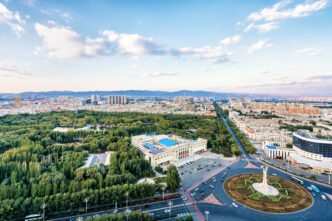Executive Summary
The Story So Far
Why This Matters
Who Thinks What?
President Donald Trump announced on Tuesday that the United States would impose 155% tariffs on Chinese goods starting November 1, citing past administrations’ trade policies as detrimental to American interests. Trump, speaking from the White House, justified the tariffs by stating that China had taken advantage of the U.S. for years due to what he described as “unsmart” business approaches by previous presidents.
Trade Tensions and Justification
Trump asserted that the 155% tariffs would not be sustainable for China, though he expressed a desire to “be nice to China.” He reiterated his stance that these measures were necessary to rebalance trade relations, claiming that the U.S. was collecting “hundreds of billions, even trillions of dollars” from tariffs, which he suggested would help pay off national debt.
The President also highlighted trade agreements made with the European Union, Japan, and South Korea, attributing their success to the leverage provided by tariffs. These comments came amid ongoing trade friction between the world’s two largest economies, which has impacted global markets and supply chains.
Upcoming Engagements
In addition to the tariff announcement, Trump confirmed plans to visit China “fairly early next year” at the invitation of Beijing. He also mentioned an expectation to finalize a trade deal with President Xi Jinping in South Korea later this month, despite recent disagreements over tariffs.
Previously, a 90-day truce in the trade dispute was agreed upon, but it is set to expire on November 10 if not extended. Trump had earlier warned of a potential additional 100% tariff on Chinese products by November 1 if trade negotiations did not advance satisfactorily.
Context of US-China Relations
The imposition of steep tariffs reflects a continuation of the Trump administration’s strategy to address what it perceives as unfair trade practices by China. The ongoing trade war has led to significant import duties on Chinese goods, with rates climbing as high as 145% in previous instances, raising concerns among global economic observers about potential disruptions to supply chains and slowing economic growth.








